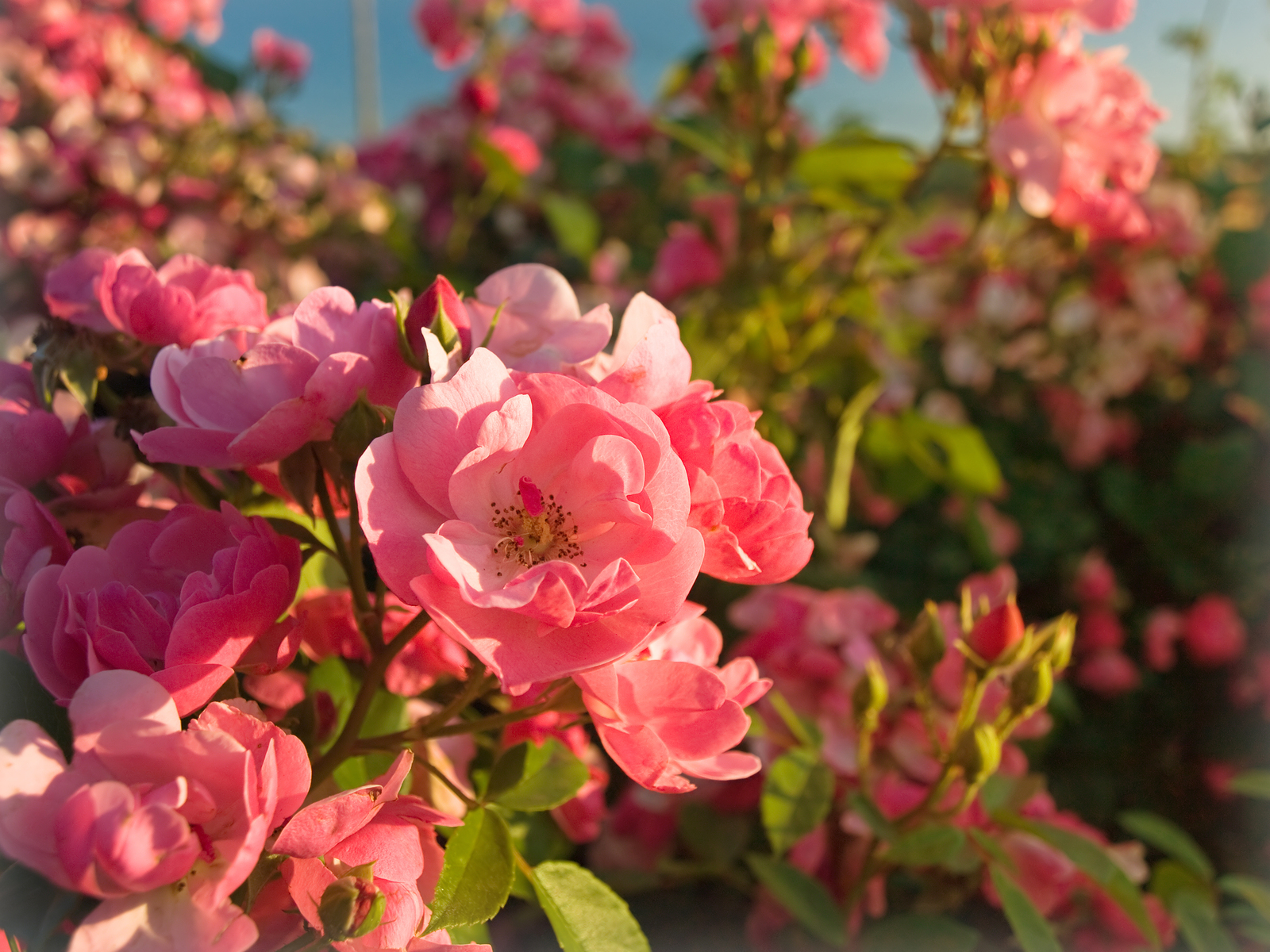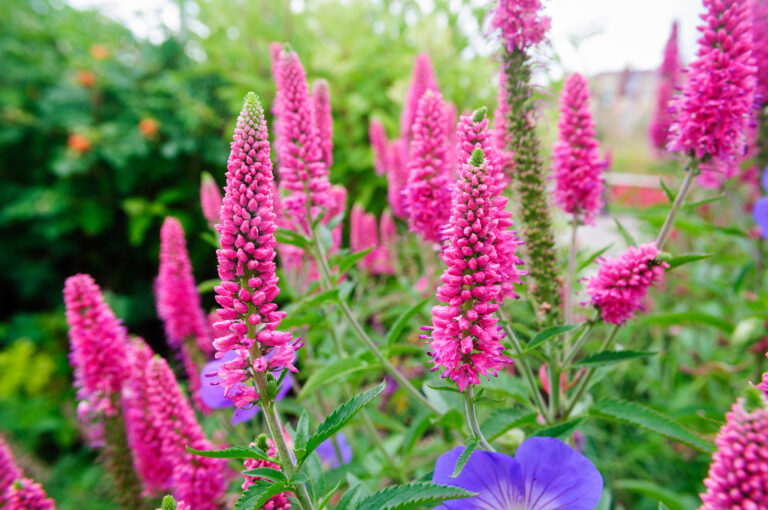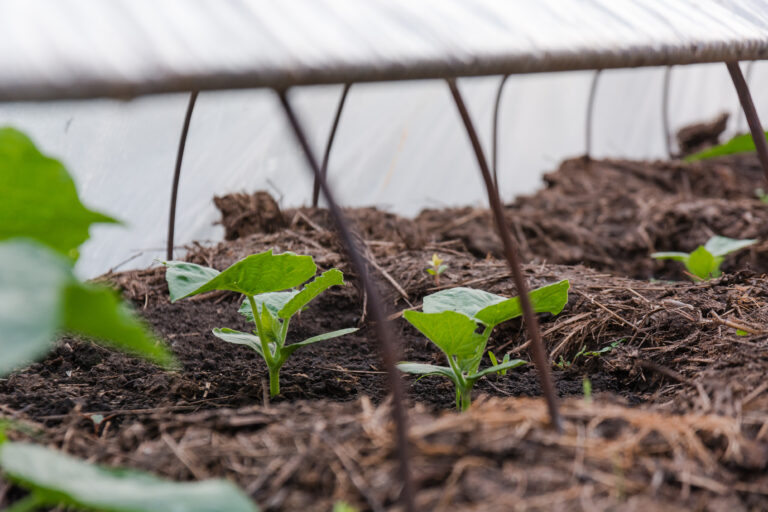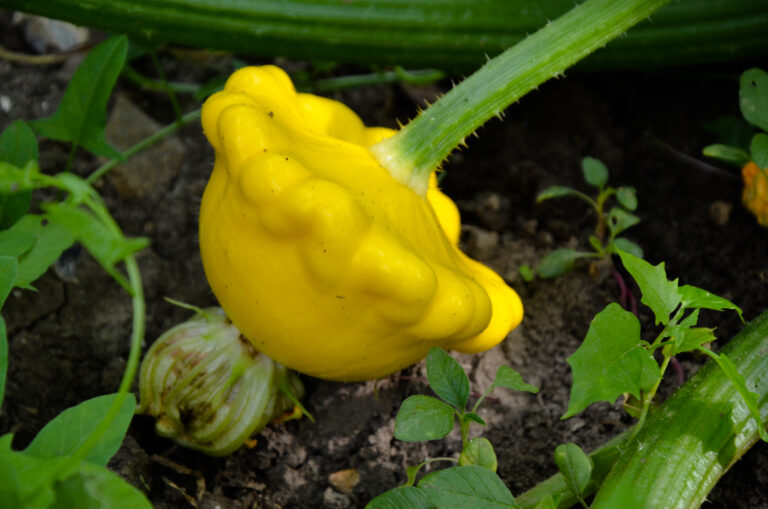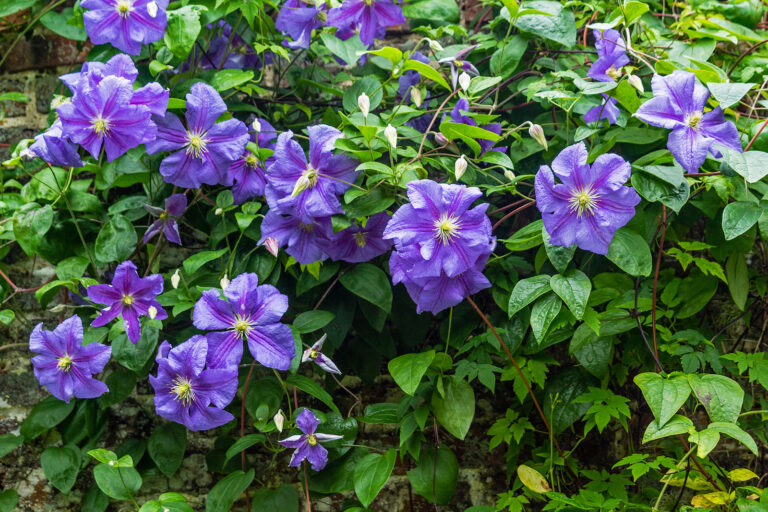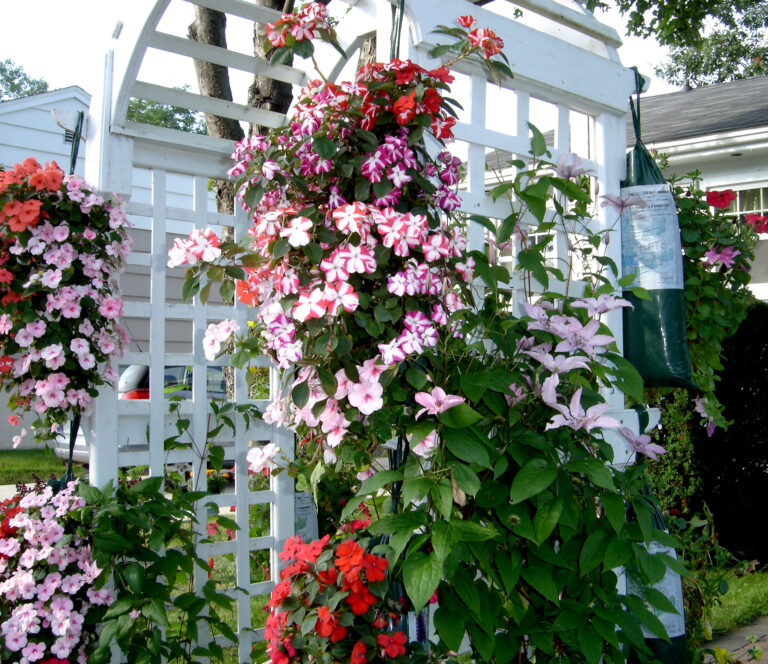Roses in Garden Design
Roses offer the garden designer a wide palette of colors, sizes, bloom times, and functions in the landscape.
Roses bloom in every color except black. There are shrub and hedge roses, climbing roses, bush roses, groundcover roses, and miniature roses.

Roses in the garden and landscape
When adding roses to the garden consider first how the rose will be used; this will determine which roses you can choose from.
Here are common ways roses are used:
- Roses in the mixed border: roses can be used in the garden much like annuals, perennials, and shrubs. They can be added singly or in multiples to the flower bed or border; planted among alongside other blooming plants. They can be planed for flower color, form, and height.
- Rose garden: Roses can be the feature of their own planting area, a rose garden. Rose gardens make their own design statement; they are often collections of color and fragrance.
- Hedges: Roses can be planted as informal hedges. Some roses grow tall and can act not only as a hedge but as a screen. Other roses grow small and can be used as a border hedge to separate a planting area form another part of the garden or the street.
- Roses for cutting: Roses can be planted for the flowers atop long stems, perfect for cutting and displaying.
- Climbing roses: Roses are not vines per se, but some rose varieties grow very long stems that can be trained to a trellis, arbor, or pergola. These roses offer vertical color in the garden and can screen unwanted views.
- Groundcover roses: Some roses grow low and sprawling; they can be used to cover slopes or expanses of open ground.
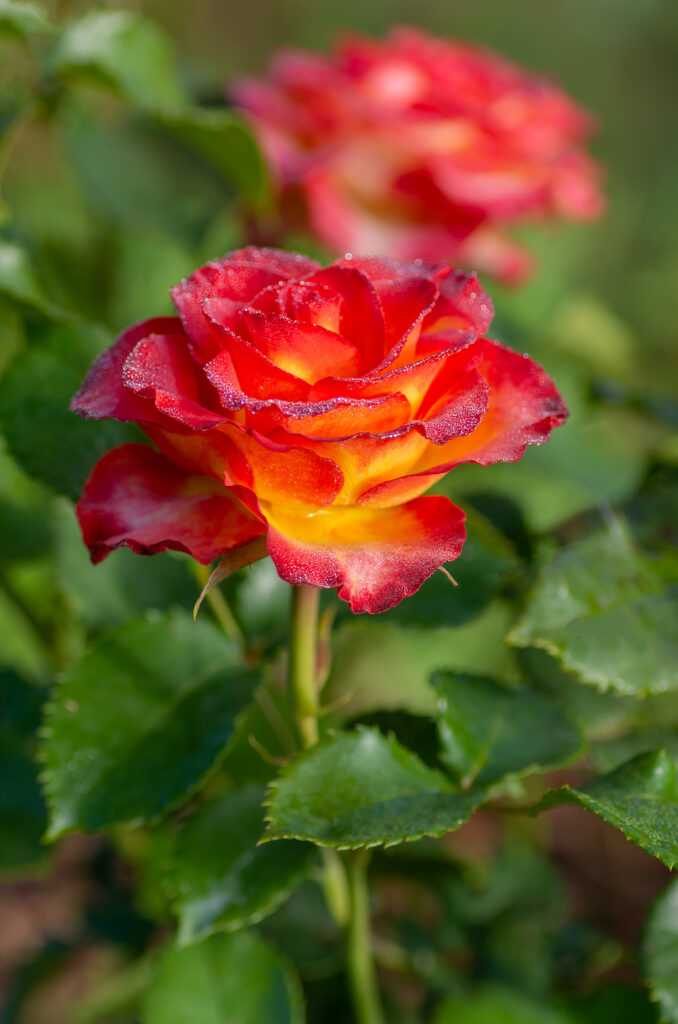
Types of roses and their uses
There are hundreds of rose varieties. Each variety belongs to a rose type. Rose types are sometimes synonymous with their use (see above). Here are common types of roses and their uses:
- Hybrid tea: bush roses with long, narrow buds on long stems; plants are upright and commonly grow 3 to 5 feet tall.
- Floribunda: derived from hybrid tea, floribundas produce clusters of flowers; bushes are compact and 2 to 3 feet tall.
- Grandiflora: produce clusters of flowers on long stems; these are hardy bushes that grow 5 to 6 feet tall.
- Polyantha: is a multiflora rose, a rose that produces numerous blooms in clusters at the top of branches; polyantha roses have small blossoms; polyanthas can grow from about 3 to 5 feet tall.
- Standard or tree roses: these are a variation of bush roses; the flowering portion of the rose is grafted to a stem commonly 2 to 6 feet tall; standards are often planted in a row.
- Landscape: a broad designation for any rose that grows more horizontally than vertically, usually about 2 feet tall or slightly taller; they are often planted in multiples to act as small hedges or as horizontal flowering features.
- Climbing: these roses develop long canes between 6 and 20 feet long that are well adapted to training on pillars, fences, trellises, arbors, and gazebos. Most climbing roses are mutations or variations of bush-type roses. They may have single flowers or flower clusters.
- Groundcover: these roses are low-growing, sprawling shrubs usually 1 to 3 feet tall; this is not actually a class of its own; these are low growing shrub roses that are commonly disease resistant so they require little care apart from shearing once or twice a year.
- Miniature: these roses grow just 6 to 18 inches tall and have small flowers. They are often grown in pots or containers but they can be grown in the ground.
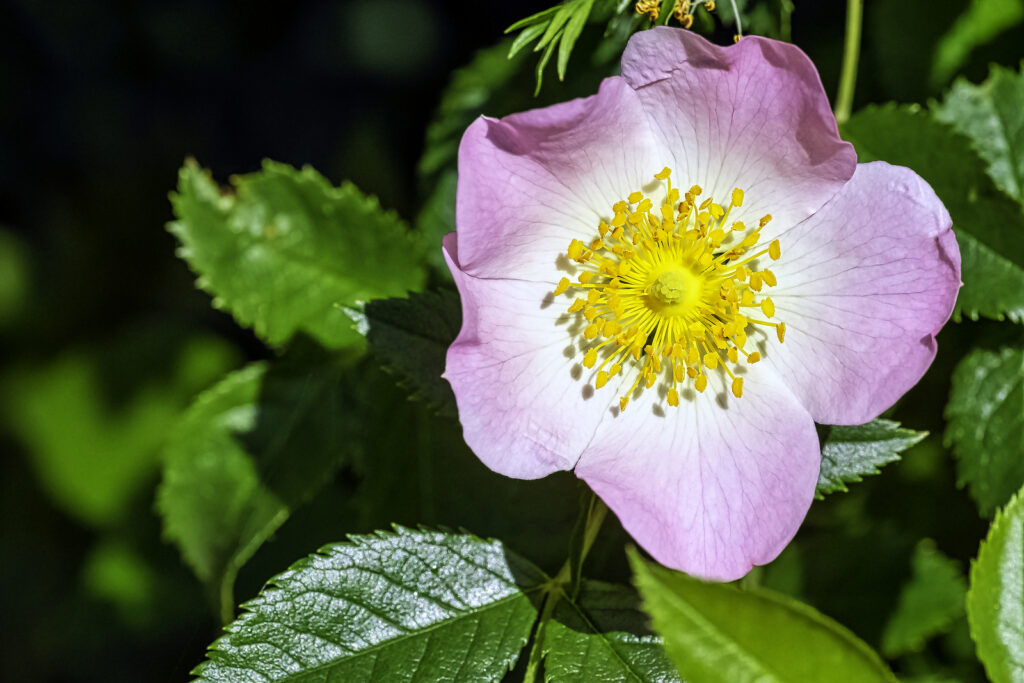
How to choose a rose
Like other flowering plants that are several things to consider when selecting roses for your garden design. Here are a few things to think about:
- Size: Select a rose that is the right size for your garden. Roses can grow from 1 foot tall to vining varieties that can cover 10 to 30 feet; decide how big you want the plant to be. Roses can be low growing and sprawling, bush-like, upright and “vase” shaped, and climbing; along with size, decide on the form.
- Flower form: rose flowers take many forms, some are singles—meaning few petals arranged in an almost daisy-like pattern of a few rows of petals; other roses have many petals, they have almost a cabbage-like appearance of layered petals. Petal count can be important; if you live where the weather stays moist, fewer petals are less susceptible to disease. That said many rose lovers are drawn to high petal counts.
- Fragrance: roses are often thought of as being very fragrant, but that’s not always true; some roses have no scent, some are lightly scented, and some have an intense fragrance. Read the packaging or do some research to get the smell you want, or not.
- Bloom time: roses are warm-weather bloomers, that said, some bloom in spring and some bloom in summer, some bloom in spring and summer. A few roses bloom only once a year—though the blossoms may stay on the plant for 4 to 8 weeks; other roses are repeat bloomers. Bloom time and succession of blooms are part of most garden designs; be sure to choose roses that will complement your garden.

Rose growing success
Roses can be aggressive growers and relatively problem-free if planted in the right place. Here’s what roses need:
- Lots of sunlight: roses need a lot of sunlight; plant them where they get at least 6 hours of direct sun each; less light will leave a rose susceptible to pest and disease problems and will result in fewer blooms.
- Good soil and drainage: roses will thrive in humus-rich, well-drained soil; roses will grow in average garden soil, but it must still be well-drained. Constantly wet soil will cause rose roots to rot.
- Space: roses need space; air circulation around the foliage and blooms will help ward off pest and disease problems. Roses that in foggy areas or where the dew never dries will be highly susceptible to fungal disease.
- Water: roses need regular water to thrive; in dry regions give roses irrigation water at the base of the plant; keep the soil evenly moist, but not wet. Avoid overhead irrigation; wet leaves will be susceptible to disease. Roses that are underwatered are susceptible to attack by spider mites, a sap-sucking insect.
Rose experts can help
The American Rose Society has rose experts in many communities who are available to answer questions and consult. Check the ARS website online for rose information, planting guidelines, and a rose consultant near where you live.
Most garden centers also have rose enthusiasts that can answer your questions.

